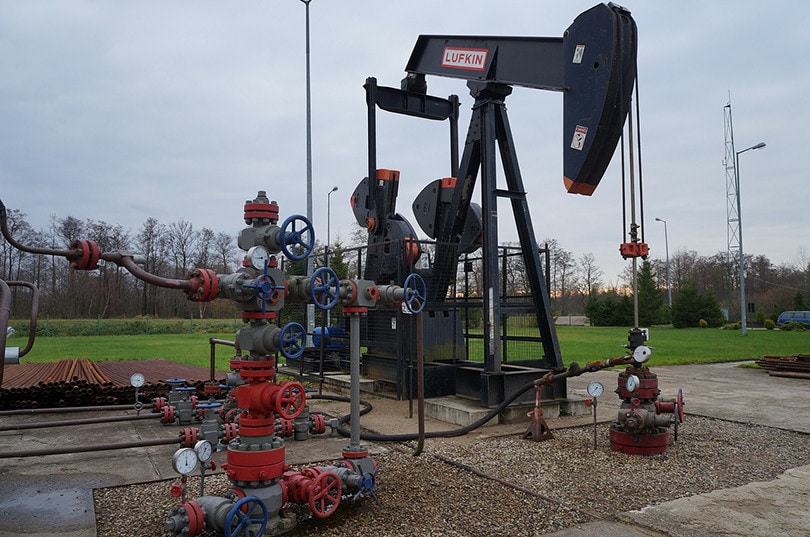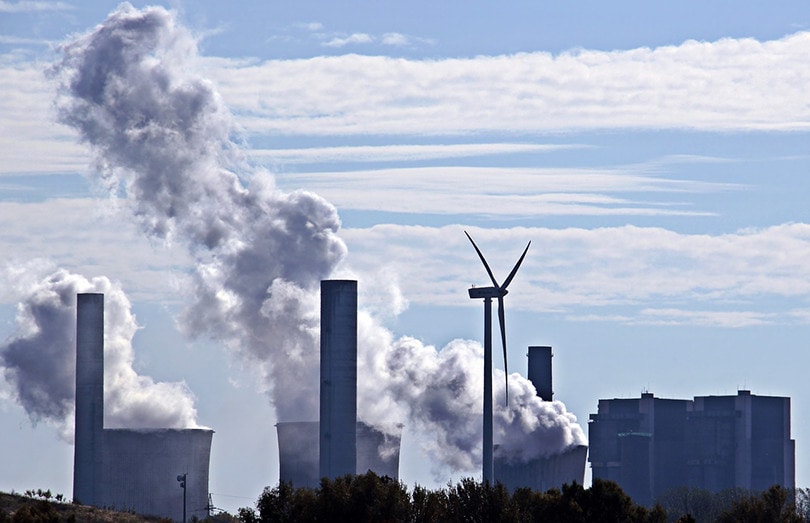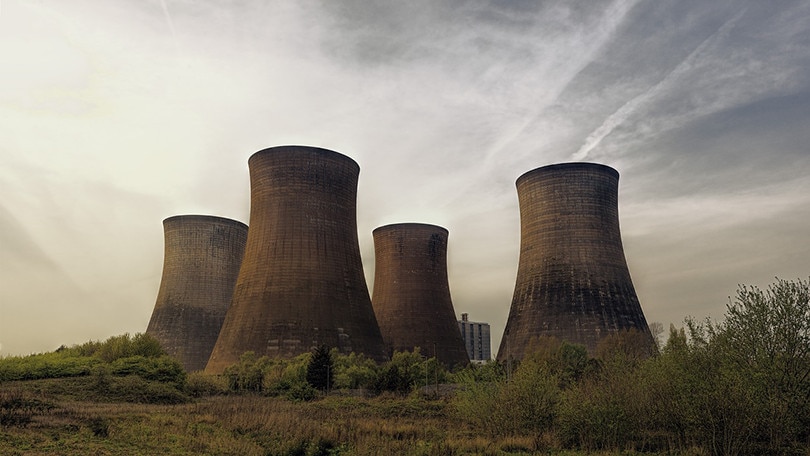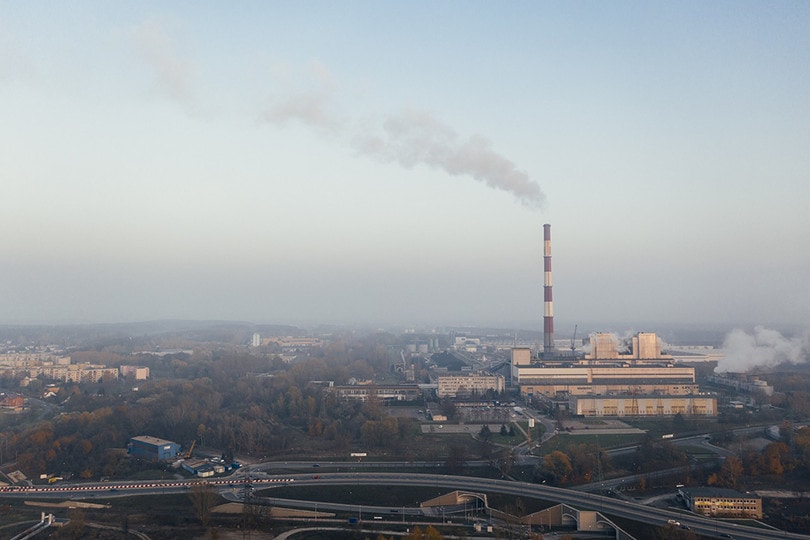10 Non-Renewable Resource Facts and Statistics in 2025
-
Pete Ortiz
- Last updated:

Note: This article’s statistics come from third-party sources and do not represent the opinions of this website.
It’s no secret that renewable resources are the future. What about non-renewable energy sources such as oil, natural gas, and coal? We use a lot of those, too.
Non-renewable resources are naturally occurring materials mined and used to produce goods. They don’t renew over time as renewable resources do. Non-renewable resources are in contrast to renewable resources, which are replenished naturally.
All non-renewable resources come from the earth and must be used sparingly because they are not replenished. These resources take millions of years to form. So, they are a limited resource.
In this article, we have compiled non-renewable facts and statistics for this year.
Click below to jump ahead:
- Coal Production and Use
- Petroleum Consumption and Cost
- Natural Gas and Nuclear Energy Statistics
- Amount of Non-Renewable Resources Used
The 10 Non-Renewable Resource Facts and Statistics
- China accounts for 54% of the world’s coal consumption, and India accounts for 11%.
- Coal has an estimated reserve of 1 trillion metric tons. It’s the most abundant fossil fuel globally.
- There are more than 843 functional onshore oil rigs and 173 offshore rigs worldwide. It means that many oil rigs are located on dry land.
- The highest amount ever generated from exporting crude oil is $113.7 billion. It was made in crude oil exports from Saudi Arabia.
- The United States imports 7.86 million barrels of petroleum daily from around 80 countries.
- There are more than 300,000 miles (482,803.2 kilometers) of natural gas pipelines in the US.
- The world’s largest consumer of nuclear energy is the United States. It accounts for 30% and more of the nuclear power consumption globally.
- About 80% of the total energy consumed worldwide comes from fossil fuels.
- 85% of the energy used globally comes from non-renewable resources.
- Above 70% of all the energy used in industrial procedures comes from non-renewable resources.

Coal Production and Use

1. China accounts for 54% of the world’s coal consumption, and India accounts for 11%.
(STATISTA)
China accounts for more than half of the coal consumed globally. It’s followed at a distance by India at 11%. It’s because these two countries are major energy consumers. They use it to produce electricity to power their industries and heat their homes in winter.
Also, China’s high level of coal consumption is attributed to its manufacturing sector. It’s responsible for producing goods for export and domestic use.
The world’s two largest coal consumers, China and India, are also trying to cut back on coal to reduce the impact of air pollution.
2. Coal has an estimated reserve of 1 trillion metric tons. It’s the most abundant fossil fuel globally.
(LIBRETEXTS)
Coal is a black or dark brown rock that is formed from peat. It’s an organic matter created by the partial decomposition of plants over many years. It contains a complex mixture of organic chemicals, including lignite and petroleum-related compounds.
Coal is the most abundant fossil fuel worldwide, but it is non-renewable, and it takes millions of years to form. Once you burn it, it’s gone. The world has an estimated one trillion metric tons of coal reserves remaining.
Petroleum Consumption and Cost

3. There are more than 843 functional onshore oil rigs and 173 offshore rigs worldwide. It means that many oil rigs are located on dry land.
(LISBDNET)
There are two ways of extracting oil. There is offshore extraction and onshore extraction. Usually, companies use offshore extraction because this method allows them to drill in deeper waters and away from the shoreline.
Most of the oil rigs globally are located on the land. They are found on the continental shelf or in inland lakes and rivers.
Most oil rigs are mobile and can be moved around. It makes them helpful in accessing remote pools of crude oil.
4. The highest amount ever generated from exporting crude oil is $113.7 billion. It was made in crude oil exports from Saudi Arabia.
(STATISTA)
Crude oil is extracted from the ground by drilling wells into an underground reservoir. Then, it’s allowed to flow to the surface where it is collected in tanks or reservoirs. The name “crude” means that these hydrocarbons are unrefined. So, they may contain impurities.
Saudi Arabia has consistently had a higher rank of total crude oil exports than other exporting countries worldwide. The country has generated 113.7 billion US Dollars from exporting crude oil.
The country is one of the few producers in OPEC. It’s also a major refiner and consumer of petroleum products.
5. The United States imports 7.86 million barrels of petroleum daily from around 80 countries.
(EIA)
The United States is the largest consumer of petroleum and natural gas globally. The country imports close to eight million barrels every day from many petroleum-producing countries.
Petroleum is used for transportation, heating, electric power generation, manufacturing, and other purposes. It is vital to maintaining the country’s supply chain and economic growth.
However, this non-renewable resource is becoming increasingly scarce and more expensive to obtain. So, demand for it continues to rise in the US and the rest of the world.
Natural Gas and Nuclear Energy Statistics

6. There are more than 300,000 miles (482,803.2 kilometers) of natural gas pipelines in the US.
(LIBRARY OF CONGRESS)
Natural gas is the cleanest non-renewable resource. It was formed from the fossils of animals and plants that lived millions of years ago.
It is one of the least environmentally damaging fossil fuels because it contains methane, which is not as dense as other fossil fuels such as oil or coal. So, it produces less pollution when burned.
Besides, the US has one of the longest networks of natural gas pipelines.
7. The world’s largest consumer of nuclear energy is the United States. It accounts for 30% and more of the nuclear power consumption globally.
(STATISTA)
The United States consumes more nuclear power than any other country globally. Besides, it has the highest per capita consumption of nuclear power. There are currently 104 nuclear reactors in the country.
Growth prospects for nuclear energy in the US depend on factors such as future electricity demand growth, natural gas prices, and continued low-cost operation of existing reactors.
Also, there’s a public perception about safety issues and competition from renewable resources, such as wind and solar power.
Amount of Non-Renewable Resources Used
8. About 80% of the total energy consumed worldwide comes from fossil fuels.
(FORBES)
Most of the energy used worldwide comes from fossil fuels. Fossils were buried under layers of earth and rock. Over time, pressure and heat changed them into oil, coal, and natural gas.
Fossil fuels are the most common source of energy in many countries. They provide the base for other sources such as hydroelectric, nuclear, biomass, solar, wind, and geothermal.
Fossil fuels are the primary energy source for electricity generation. They are also the source of heat for industrial processes and transportation.

9. 85% of the energy used globally comes from non-renewable resources.
(LIBRETEXTS)
The world relies heavily on non-renewable resources for a large portion of its energy needs. Besides, close to 90% of the energy consumption worldwide is non-renewable resources.
A lot of energy is used in the production, distribution, and consumption of goods. Typically, only a fraction of that energy is recovered and used again.
The rest remains in the form of unused waste heat or is emitted as carbon dioxide during combustion.
10. Above 70% of all the energy used in industrial procedures comes from non-renewable resources.
(EIA)
Large amounts of energy are used in industrial procedures. Besides, more than half of all the energy used in industrial processes comes from non-renewable energy resources.
It means that most of the energy being used for industrial procedures is never recycled. It can have a devastating effect on the environment, including global warming.
Trying to get people to change their habits and reduce their use of non-renewable resources can be tough. But, if the shortage of these resources continues, it could cause major effects for future generations.
Frequently Asked Questions on Non-Renewable Resources
How do non-renewable resources impact the environment?
Non-renewable resources are used up once they’re extracted from the earth. They are more limited than renewable resources. Non-renewable energy resources include petroleum, natural gas, nuclear energy, and coal. They are used to create energy and to make goods.
The primary concern is that many non-renewable resources are considered to be pollutants. For example, fossil fuels consist of hydrocarbons. When burnt, they turn into carbon dioxide (CO2) and other gases, which pollute the environment in several ways. The presence of CO2 in the air contributes to climate change.
Some metals can also contaminate rivers when extracted. Nuclear power causes radioactive waste to build up.
(GREEN TUMBLE)

What is the most commonly used non-renewable resource?
The most commonly used non-renewable resource is fossil fuels. This is the fuel that we use to cook, heat our homes, and drive our cars.
Fossil fuels are formed by the decomposition of plants and animals. They are the remains that have been buried in the earth for ages. As they decompose over time, they turn into coal, crude oil, and natural gas.
The most commonly used fossil fuel is oil. Oil is used in many different things like gasoline, heating fuel, plastics, and more. The reason why oil is a non-renewable resource is that there isn’t enough of it to keep extracting it at the rate we are taking it out of the ground.
(NATIONAL GEOGRAPHIC)
What type of non-renewable energy causes the least pollution?
Natural gas causes the least pollution because it burns more cleanly than other forms of fossil fuels. It does not pollute as much as other non-renewable sources when burned. But, when it is extracted from the ground, it can cause a large amount of pollution if not handled properly.
When done well, natural gas causes less pollution than other fossil fuels and should be considered a good alternative to other sources.
(FLEXBOOKS)
What can you do to save non-renewable resources?
Recycling programs are the best method of saving non-renewable resources. They are a great way for people to reuse items that would be thrown away.
Many communities have recycling centers where residents can bring their recyclables. Some communities even pay people to bring their recyclables in!
Conservation programs will also help save non-renewable resources. They help people reduce their consumption of non-renewable resources. For example, if you drive less and use public transportation more often, you’ll be reducing your consumption of fossil fuels.
Try to limit the number of products you buy that are made of plastic, paper, and other materials that can’t be renewed. Simply put, recycle, reuse, and reduce.
(SCIENCING)

What is the key difference between non-renewable and renewable sources of energy?
The main divergence between renewable and non-renewable sources of energy is that the former are naturally replenished over time, while the latter isn’t. The primary sources of renewable energy include solar, wind, and water.
Tidal power, geothermal, biomass, and hydroelectric power are all renewable. It’s because they rely on natural processes that are constantly replenishing. Unlike these renewable sources, non-renewable resources do not regenerate themselves. Instead, they’re depleted as they’re used.
Non-renewable resources include fossil fuels and nuclear power. The use of non-renewable sources can lead to harmful side effects on people and the environment. They comprise pollution and resource scarcity.
Renewable energy is often considered more eco-friendly than non-renewable resources. It’s because it can reduce the harm caused by exhaust fumes and other pollution associated with fossil fuels and nuclear power.
But some renewable energy sources may not always be good for the environment either. For instance, hydroelectric power can cause flooding in fragile ecosystems.
(ENEL)
Related Read: 10 Renewable Energy Facts and Statistics
What are the advantages of non-renewable resources?
Energy from non-renewable resources is easy to come by. These resources are found all over the world. They can be easily transported from where they are found to other places where they are needed.
Non-renewable resources are a lot less expensive than renewable resources. They don’t require high maintenance costs like renewable resources.
These sources of energy can be used to make electricity or heat homes. Also, non-renewable resources are a source of chemicals, fertilizers, and synthetic materials such as plastics and fibers.
(GREEN GARAGE BLOG)
How can a renewable resource become a non-renewable resource?
Any natural resource can be a non-renewable resource if its consumption rate from the earth’s crust is more than the rate at which it’s renewed. For example, gold is not a renewable resource because its consumption rate exceeds its renewal rate.
A renewable source can become a non-renewable resource when it’s overused. Some of our most important sources of energy (fossil fuels) were created millions of years ago.
As these minor energy sources are burned, they release greenhouse gases into the atmosphere. It causes global warming, which can have negative effects on the environment and human life.
(STJOANSK)

Types of Non-Renewable Resources
There is an abundance of non-renewable resources available on earth. But they are becoming increasingly difficult to locate and extract. The speed at which these resources can be used up is also increasing.
Resources that cannot be replenished comprise nuclear energy, coal, natural gas, and oil. Oil is one of the most sought-after resources globally. It’s used to produce many things that have made life easier for us. From the production of plastics, medicines, and gasoline to aircraft fuel and synthetic rubber, oil has its fingers in every industry.
Oil is found in rock-like deposits that can be accessed using drilling equipment and machinery. Then, it’s transported via pipelines to refineries where it’s processed into different types of fuels used for transportation, cooking, and other purposes.
Coal is another type of non-renewable resource. It takes millions of years to form. That’s why it is non-renewable. It is the most abundant fossil fuel and a crucial energy source in the US. Coal (also known as black gold) was formed from plant matter that was buried underground millions of years ago.
The chemical structure of coal is composed of carbon and hydrogen. Coal contains the most energy per weight compared to other fossil fuel sources.
The other type of renewable energy is natural gas. It’s a fossil fuel that was formed from the decayed remains of living organisms. It has been used for centuries for heating and cooking. But, today, it’s the primary source of energy used in industrial processes.
Natural gas can be found anywhere in the world, but most of the natural gas reserves are located in Europe and Asia. The largest deposits are in Russia, Norway, Iran, Qatar, Canada, and Algeria.
The last type of non-renewable resource is nuclear energy. It’s a non-renewable source of energy that is created by nuclear fission. It occurs when a massive unstable atomic nucleus splits into two smaller stable nuclei.
It happens because the strong force holding the nucleus together is overcome by the weak force pushing the individual nucleons apart.

Related Read: 9 Solar Energy Facts, Statistics and Data
Conclusion
As you can see from these facts, non-renewable energy is a huge part of our world today. It powers us through our machines and amenities that make our lives easier and longer.
But these non-renewable energy sources release large amounts of carbon dioxide into the atmosphere when burned to create electricity or power vehicles. It contributes to global warming and climate change.
However, these resources aren’t all bad, especially if they’re used responsibly and in smarter ways. We need to harness new technologies to minimize their environmental impact.
You might also be interested in: 10 Geothermal Energy Facts and Statistics
Featured Image Credit: anita_starzycka, Pixabay
Contents


